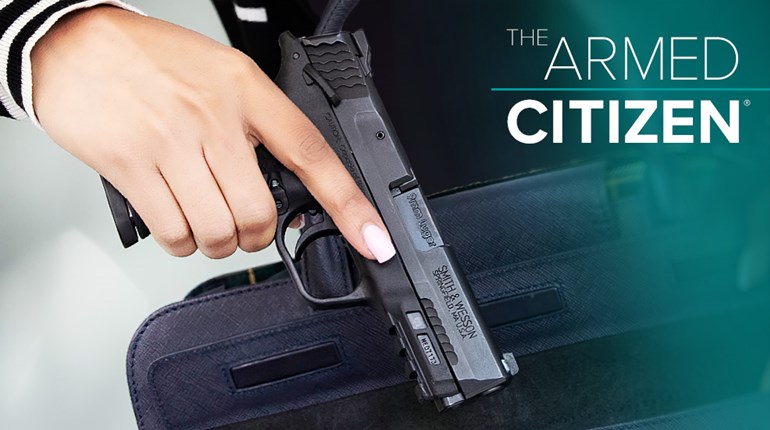
There’s a notion that in order to take advantage of high-velocity revolver loads, such as .38 Special +P or .357 Magnum, you must have a long barrel. The thought behind this is that the additional powder required to reach higher velocities requires more barrel length for the powder to completely burn. All things being equal, you would need more barrel length to burn more powder. However, some powders burn faster than others. This allows ammunition manufacturers and handloaders to level the barrel-length playing field.
If a longer barrel were needed to realize the advantages of +P or .357 Magnum loads over the .38 Special, defensive handgunners desiring to carry short-barreled revolvers would be better off avoiding .38 Special +P and .357 Magnum loads all together. After all, the recoil of the .357 Magnum can be three times that of the .38 Special. This makes the .357 Magnum harder to shoot with precision and slower when trying to deliver follow-up shots.

The thing is, there is no truth to this old wives’ tale. The .38 Special operates at a maximum average pressure (MAP) of 17,000 PSI, the .38 Special +P at 18,500 PSI, and the .357 Magnum at 35,000 PSI. Based on these SAAMI (Sporting Arms and Ammunition Manufacturers Institute) standards and limitations, you would expect .38 Special +P ammunition to run about 9 percent faster and be similarly more effective. The .357 Magnum should be twice as fast and as effective as the .38 Special.
Of course, that’s not the case. Velocity increases at an estimated rate of about a quarter of the pressure increase. This means that, on average, .38 Special +P ammo should run about 2 percent faster than standard .38 Special loads, and .357 Magnum ammo should be about 25 percent faster. This is an easy hypothesis to prove; all that’s necessary is to fire a collection of .38 Special, .38 Special +P and .357 Magnum loads over a chronograph through a short-barreled revolver.

I randomly selected nine loads—three in each chambering—and fired them over a chronograph out of a Smith & Wesson revolver with a 2.5-inch barrel. The .38 Special ammunition produced an average velocity of 836 fps. The .38 Special +P loads averaged 960 fps, and the .357 Magnum loads averaged 1,276 fps. The .38 Special +P loads showed a 15 percent increase in velocity over the 38 Special loads, and the .357 Magnum loads showed a 52 percent increase. However, the slow-poke 158-grain .38 Special load kind of skewed the results. Omit it and the velocity advantages would be about 4 percent and 38 percent, which is much closer to the prophesied 2 percent and 25 percent guess.
So, with regards to the suggestion that you’ll not see much velocity gain with .38 Special +P or .357 Magnum loads over standard .38 Special loads—when fired from a short barrel revolver—is nothing but a myth we can call busted.

However, a more-important consideration is terminal performance. No one cares how fast a bullet is traveling if it does not upset with a wide frontal diameter and penetrate deep enough to reach vital organs. I just happened to have a few blocks of Clear Ballistics gelatin lying around and figured I might as well continue the investigation. Now, keep in mind, Clear Ballistics is not a perfect tissue simulant, but it does offer a consistent media for comparison.

Average penetration with the .38 Special loads was 12.1 inches. Average expansion was 0.493-inch or 1.38 times the unfired bullet diameter. (The 158-grain HPR load failed to expand.) With the .38 Special +P loads, penetration averaged 12.3 inches, and expansion averaged 0.501-inch or 1.4 times original bullet diameter. (The Black Hills HoneyBadger load is designed to not expand.)

With the .357 Magnum, every load exited the block, so the average was actually 16+ inches. As for expansion, the .357 Magnum averaged 1.6 times the unfired bullet diameter or 0.584-inch. This translates to a penetration advantage of about 2 percent for .38 Special +P loads and about 25 percent for the .357 Magnum. Hmm, where have we seen those numbers before?

Granted, these results were obtained with different projectiles and dissimilar loads. To be a truly valid, scientific assessment, loads using the same bullets from the same manufacture should be compared. Additionally, to really get an accurate glimpse of the advantage extra velocity loads like .38 Special +P and .357 Magnum offer, they should be tested in multiple handguns with a variety barrel lengths.

Regardless, don’t let anyone lead you down the wrong path. I don’t care if they live behind a gun-shop counter, are some sort of Internet expert or are a gun writer extraordinaire. Facts are facts; .38 Special +P ammo is marginally more effective than .38 Special, and .357 Magnum loads are substantially more effective, even when fired from short barrels. Funny thing about facts; they’re hard to argue.




































